How to Delegate GRT on The Graph Network via L2 on Arbitrum [Updated]
In the world of decentralized web (web3), The Graph (GRT) plays a vital role in providing the infrastructure for the internet of the future. Often referred to as the indexing and query layer of web3, The Graph empowers users to efficiently organize and retrieve data. Its decentralized nature is made possible through tokenomics and a network of participants who contribute to the ecosystem and earn GRT, the native work utility token of The Graph.
Recently, The Graph Foundation introduced new enhancements to The Graph Network by implementing a Layer 2 scaling solution known as Arbitrum. This integration brings substantial gas cost reductions for network participants, unlocking significant advantages. By delegating your GRT on The Graph Network via Arbitrum, you not only save on gas fees but also maximize your rewards and benefits as a Delegator, surpassing the experience of interacting with the protocol on Layer 1 (Ethereum).
In this updated guide, we will walk you through the process of selecting an Indexer on The Graph Network and demonstrate how to optimize your GRT delegation specifically on Arbitrum.
Why Delegate GRT on Arbitrum?
When GRT tokenholders contemplate how to utilize their tokens, several options come to mind. While holding onto tokens may be the instinctive choice for many, The Graph Network offers alternative avenues to consider. These include participating as a Curator, organizing subgraph data as an Indexer (such as Braindexer!), or becoming a Delegator. While holding requires minimal effort, it does not yield additional rewards. Curating and indexing, on the other hand, demand active engagement with the network and carry the risk of GRT loss.
Delegating, however, presents an attractive opportunity to earn rewards without the need for active management or significant risk. By delegating, you stake your GRT tokens with an Indexer of your choice and earn passive income.
As a Delegator, you contribute to network operations while earning passive rewards on your existing GRT holdings. Moreover, delegating to a smaller Indexer not only benefits you but also promotes decentralization by supporting a wider range of data providers.
How to Choose an Indexer on The Graph Network

To select an Indexer, let’s begin by understanding the various metrics displayed on each Indexer profile on The Graph Network. These metrics will be instrumental in evaluating Indexer performance and getting an understanding of what kind of rewards you can earn on your delegated GRT.
The first things most people notice in an Indexer’s profile are the Indexing Reward Cut and Query Fee Cut. At a basic level, these metrics reflect how much the Indexer is willing to split rewards with their Delegators. Indexing rewards and query fees are the two primary income streams for Indexers, which are then shared with Delegators. Earning a cut of indexing rewards and query fees is an integral part to delegating, so you want to make sure you’re happy with the percent allocation. Some Indexers will offer a high rewards allocation in the beginning in order to entice new Delegators, but then might change it over time. As with anything, if it sounds too good to be true, it usually is.
Another key metric to pay attention to is how much GRT does the Indexer have staked (self-stake) without any delegation. Once the Indexer reaches its max capacity, which is dictated by the amount of tokens it has staked, it cannot accept more until it adds stake. If the Indexer has a large amount of stake, that is a sign it is confident in its ability to earn delegation and therefore rewards.
It’s also advised you ask, does your Indexer have a social presence? Is the individual (or individuals) available for technical assistance should something go wrong or you have questions? This is just as important as if the Indexer will earn rewards. Additionally, an Indexer’s social presence can be measured by their activity in The Graph Discord or community events, such as Indexer Office Hours.
Now, let’s learn how to delegate GRT on L2 (Arbitrum).
How to Delegate to an Indexer on The Graph Network
To delegate, you’ll need a wallet like MetaMask or Coinbase Wallet that contains both GRT and Ethereum (ETH). Don’t have a wallet yet? No worries! You can easily set up a MetaMask wallet here or a Coinbase Wallet here. For added security, consider utilizing a cold wallet such as Ledger or Trezor. You can acquire GRT and ETH from centralized exchanges like Coinbase, Kraken, or Gemini. Alternatively, decentralized exchanges like Uniswap or Sushiswap also offer these tokens.
Now, let’s discuss the optimal amount of GRT to delegate. The decision ultimately depends on your personal preference. Just remember, when delegating on Arbitrum, the gas fees are significantly lower, giving you more flexibility in the delegation amount. Since gas fees are quite cheap on Arbitrum, it’s feasible to start with as little as 100 GRT.
Once you have both GRT and ETH in your wallet, the next step is to transfer them to the Arbitrum network using the Arbitrum bridge. This process involves moving (or bridging) your GRT and ETH from the Ethereum network to the Arbitrum network. The GRT tokens will be used for delegation, while the ETH will cover gas fees on both the Ethereum and Arbitrum networks.
By following these steps, you’ll be well-equipped to delegate your GRT tokens efficiently and make the most of your delegation experience on Arbitrum.
Have some GRT and ETH in your wallet? Then let’s get stared!
How to Bridge GRT Tokens to Arbitrum
1. Go to https://bridge.arbitrum.io/ and connect your wallet.
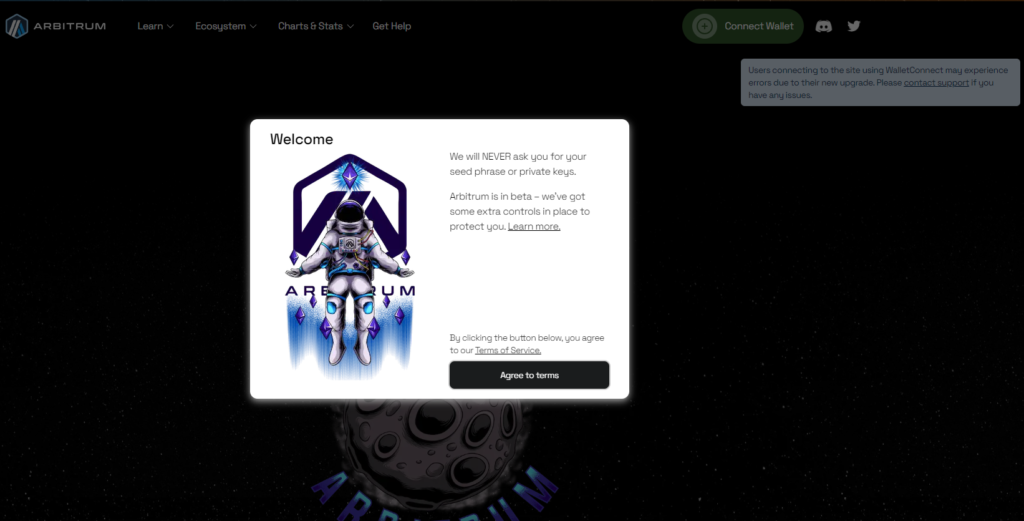
2. Once your wallet is connected, you’ll need to move ETH from Ethereum network to Arbtirum network. As shown below, you will see the total balance of ETH you have on mainnet. Now you will need to enter the amount of ETH you want to transfer. We suggest you move a minimum of 0.03 ETH.

3. Once you have entered the ETH amount, you will need to click the “move funds to Arbitrum” and then approve the transaction in your wallet.
Note: Transactions can take up to 15 minutes on Arbitrum bridge to complete.


4. Now you will need to repeat the same process you just performed in moving ETH to Arbitrum and move your GRT to Arbitrum. This means you will need to click “move funds to Arbitrum One,” pay any gas fees, approve the transaction in your wallet, and wait up to 15 minutes.

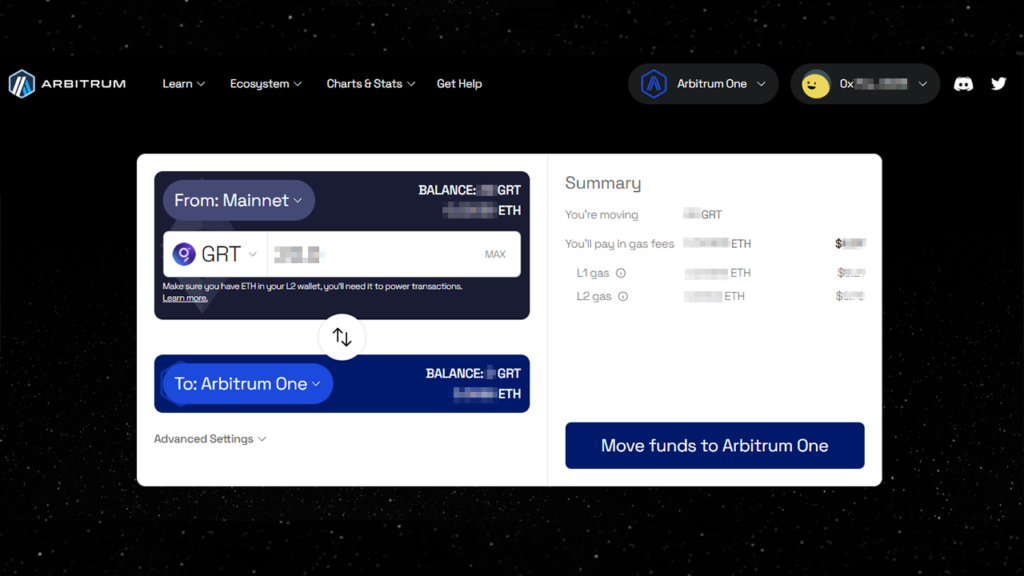
5. Once the GRT and ETH have been bridged to Arbtirum One, you can head over to Graph Explorer on thegraph.com
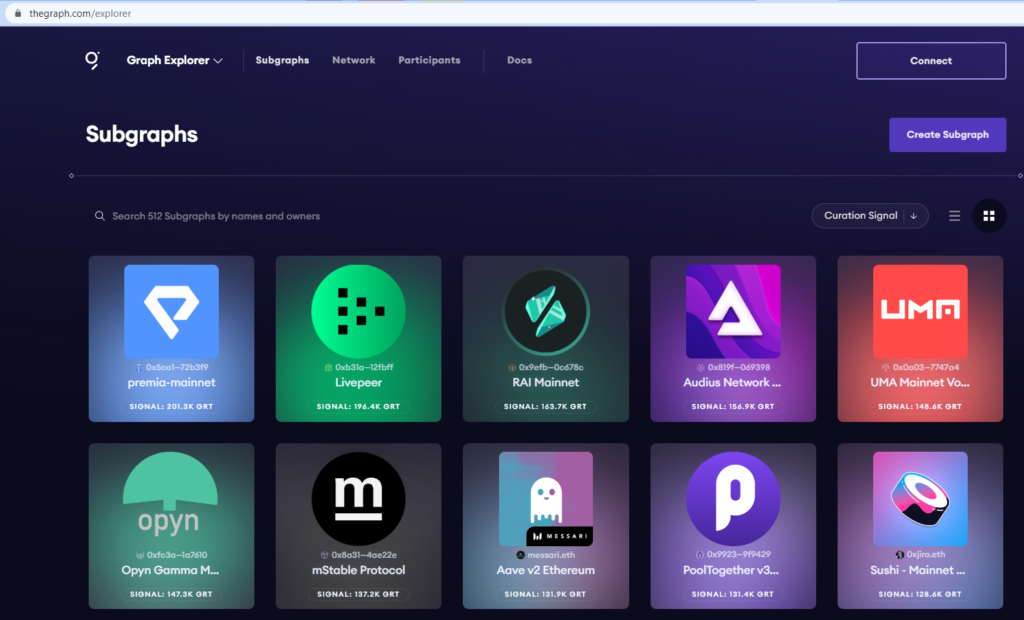
6. Select “Connect” in the top right and select which wallet you would like to connect
You may need to switch networks in your wallet to have thegraph.com connect to your Arbitrum One address that holds your GRT and ETH.

7. Make sure you toggle to the Arbitrum network.

8. Select “Participants” in the top left and choose your Indexer
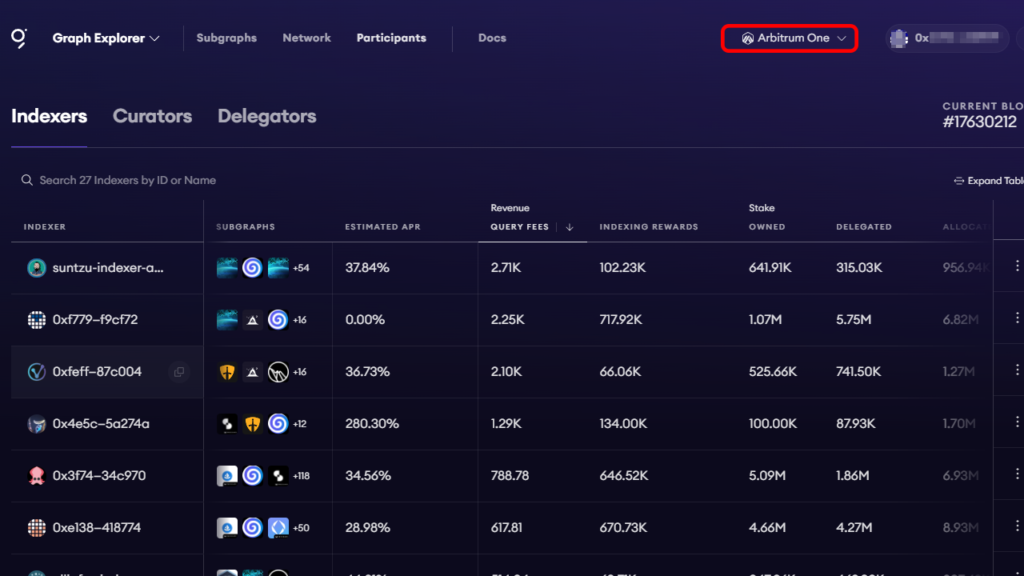
9. This is what an Indexer’s profile page looks like:
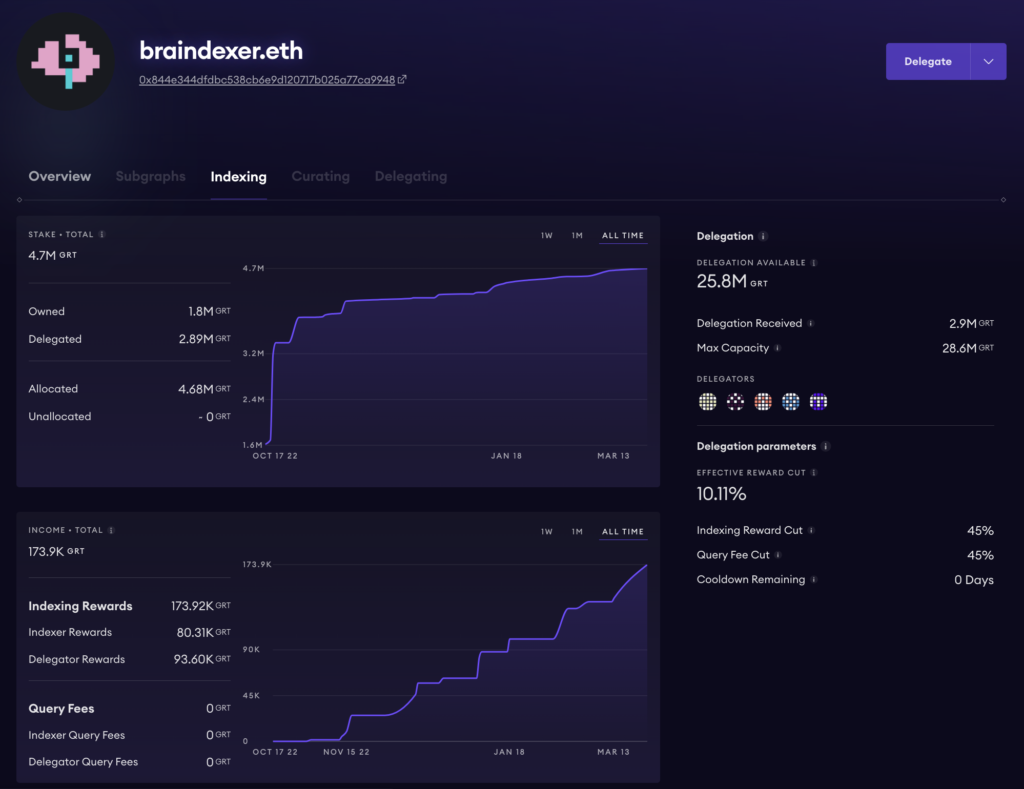
10. At this point, this is where you can decide to delegate via Arbitrum. Arbitrum is the network with lower gas fees and faster transactions.
11. After choosing your desired network, select “Delegate”
Note: Not all Indexers are participating in the protocol on Arbitrum yet. Below is a screenshot of Braindexer’s Indexer on Arbitrum.
12. Choose how much GRT you’d like to delegate to this Indexer. Below is a screenshot of Braindexer’s Indexer on Ethereum.

13. Make sure you have some ETH in your wallet (this applies to both Ethereum and Arbitrum) to pay for gas! The below screenshot depicts a transaction on Ethereum.
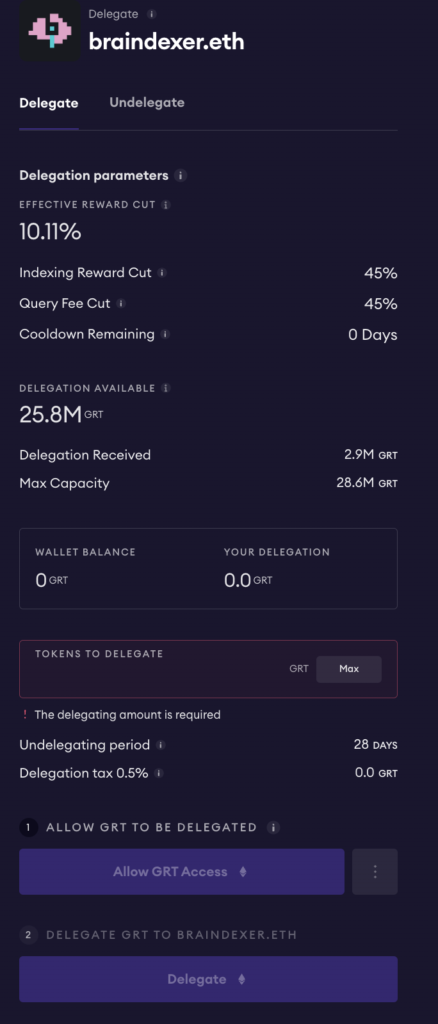

14. Confirm the transaction and you’re done! Welcome to delegating, and congratulations – you’re officially decentralizing web3’s data access layer!
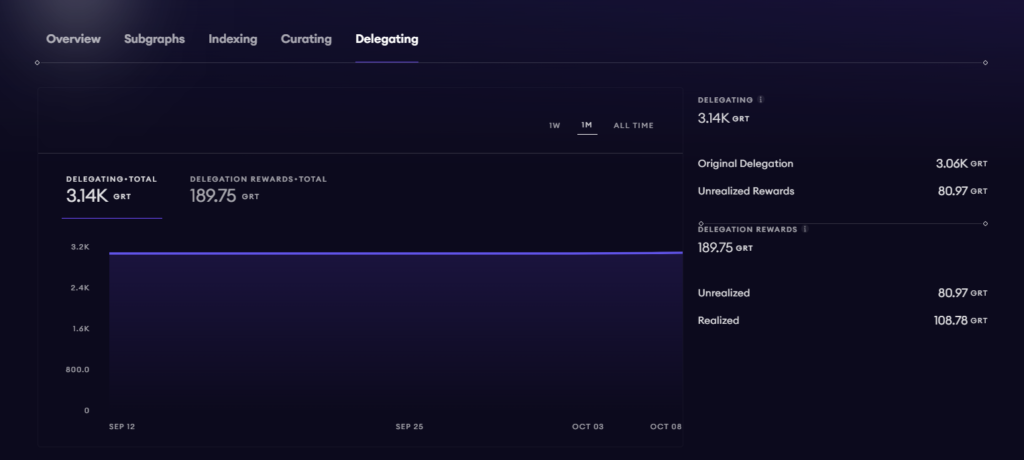
Stay tuned via Braindexer’s Twitter for the latest on The Graph Network’s L2 scaling efforts with Arbitrum. Looking for the Indexer profile link to delegate to Braindexer? Delegate here!
Glossary: The Graph Network, L2, Arbitrum, Indexers
Stake Total → Total number of tokens, including rewards
Owned → The amount of GRT held by the indexer to run indexing functions, not delegation
Delegated → The amount of GRT committed to this indexer, outside of normal indexing functions
Allocated → Tokens staked to a subgraph
Unallocated → Any tokens available to be staked to a subgraph
Delegation Available → How much stake this indexer can accept (The Graph allows 16x the “Owned” amount”), minus any that has already been delegated
Delegation Received → How much stake from users has been committed to this indexer
Max capacity → the most amount of GRT this indexer can accept
Delegation Parameters → the rules this indexer has set for any delegators
Indexing Reward Cut → % of rewards the Indexer keeps
Query Fee Cut → % of query fee rebates the Indexer keeps (queries are when a subgraph pulls data from the blockchain, which the indexer helps organize)
Cooldown Remaining → How long until the Indexer can change their delegation parameters again
Indexing Rewards → Total rewards earned
Indexer Rewards → Rewards tokens earned by the Indexer
Delegator Rewards → Rewards tokens earned by delegators
Query Fees → Total fees paid to this Indexer
Indexer Query Fees → Query fees earned by the Indexer
Delegator Query Fees → Query fees earned by the Delegator
About Braindexer
Braindexer is a team of web3 brainiacs on a mission to index the decentralized internet. We’ve created a highly effective, innovative, and adaptive Indexer that rewards our Delegators, provides reliable and quality infrastructure to developers, and supports a multi-chain future.


